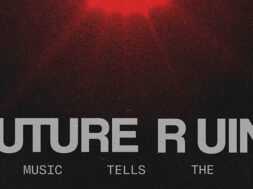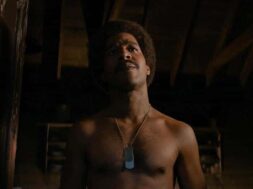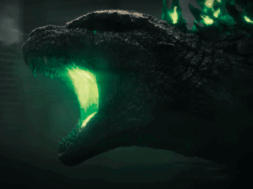Some Fairytales Are True: 10 Years Later, Celebrating Holiday Horror Classic ‘Rare Exports’
A lot of movies take a new twist on an old fairytale or legend, but few do it with the panache, wit, and subtle satire of Rare Exports-A Christmas Tale. Expanded from two short films, Rare Exports Inc. (2003) and The Official Rare Exports Inc. Safety Instructions (2005), also from writer/director Jalmari Helander, it is a film filled with the darkest of dark humor, as biting as the winter chill on screen. It jabs a thumb in the eye of the Disneyfied versions of our most dangerous stories and twists the nose of corporate greed and ecological irresponsibility. Still, for all its sharp edges, at its heart it is the story of a father and son. But it begins with one man’s obsession.
At the direction of Riley (Per Christian Ellefsen) and his powerful Subzero corporation, workers have been drilling into Korvatunturi mountain and discover something strange: a layer of sawdust sixty-five feet thick far below the surface. Riley comments that sawdust was once commonly used to keep ice from melting. The mountain is, in a sense a giant freezer, but does not reveal what he believes is being preserved. He tells the foreman, Brian Greene (Jonathan Hutchings-who narrated the short films), to prepare to blast with dynamite and orders all workers to a strict code of conduct including no smoking, drinking, or cursing. In a speech, he declares to the workers that they are standing upon a “sacred grave.” A tomb that puts “even the pyramids to shame.” The speech is overheard by young Pietari (Onni Tommila) and his friend Juuso (Ilmari Järvenpää). Pietari is convinced that Riley has found the ancient tomb of Santa Claus and begins to study up.
Through his research, Pietari quickly discovers a much darker vision of the Santa legend than he had ever heard before. He reads stories of a cruel, horned creature that kidnaps and brutalizes naughty children, stuffing them in sacks, boiling them alive, and beating them with branches until they bleed. This Santa Claus leaves his barefoot prints in the snow and acts more like an animal than a man—and he is certainly not jolly. Pietari also becomes convinced that this frightening being is going to come after him for even the slightest misbehaviors he may have committed. He comments to Juuso that the Coca-Cola iteration is just a made-up fantasy, but this vicious and dangerous version is real.
This is the overarching theme of the movie. Throughout the years, the edges have been sanded off our fairytales and legends, making them more palatable to the masses. Stories of the eyes of Rapunzel’s prince being pierced by thorns and Cinderella’s stepsisters cutting off their own toes to fit the glass slipper have been tamed and softened since the days of the Brothers Grimm. In the same way, the old tales of Santa Claus from Finland, where the film originates, are dark and frightening. They look more like the legends of Krampus than what we think of as Santa Claus. Rare Exports is hardly the first film to explore the “hows” and “whys” behind Santa. Usually, they are explained in magical ways, as in films like Miracle on 34th Street (1947) or The Santa Clause (1994)—you know, warm and comfortable holiday fare. But those are the “nice” stories that Rare Exports has no interest in being. Those are the kinds of stories that have blunted Santa’s teeth and clipped his claws.
Somewhere in our history, as a society we decided it was cruel to scare children. As a father, I understand this instinct. But if children never experience fear in a controlled and safe space, will they really be equipped to handle it in the real world? In the film, facing a fearful and frightening vision of Santa Claus and his helpers leads to growth and ingenuity in young Pietari. Ultimately, it leads to a stronger bond between friends, neighbors, and above all, a father and son. The film raises some thought-provoking questions. Are we doing a disservice to the legend by making it kinder and gentler? Do we take away the power a story has by making it easier to swallow? Is it wise for us to embrace things that we should have a healthy fear of? On the other side of this coin, do stories like these have the ability to instill an unhealthy sense of fear? One that paralyzes us and our ability to function without fear? For all the questions it raises, the film gives us the space to answer them ourselves rather than spoon feeding a simple solution right down our gullet. It never forces any kind of agenda, even as it warns of these and other dangers in the world.
Pietari’s father Rauno (Jorma Tommila) is simply trying to do the best he can throughout the film, but the activities of Subzero Inc. have threatened their livelihood. Rauno is convinced that the blasting on the mountain has sent wolves down onto his land and that of his neighbors, threatening their livestock and the reindeer herds they depend on for their livelihood. In desperation, he digs an illegal “wolf pit” filled with sharpened poles and covered with branches and snow to kill the beasts. One day, Rauno and friends Aimo (Tommi Korpela) and Piiparinen (Rauno Juvonen) find the slaughtered carcasses of dozens of reindeer in a field and fear they have lost everything. Their fears only increase when instead of finding a wolf in his trap, Rauno and Pietari find an old man with a long white beard, who they assume to be dead. It turns out that this man is not so easy to kill—and undeniably vicious. Believing they have trapped Santa Claus himself, Rauno and company put the man in a cage and drive him to meet Riley, who informs them of a much more terrifying reality.
In many ways, Rare Exports is an “eco-horror” film, touching on the dangers of recklessly upsetting the balance of nature, particularly for monetary gain. The actions of Subzero unleash dangerous predators into the wild that destroy an entire herd of animals that people count on for their survival. It not only touches on the balance of nature, but the balance of human interaction and economics. In this case, how a large multinational corporation threatens to destroy the lives of the local farmers. The irony is that by the end of the film, this small group of farmers has monetized these predators into the titular Rare Exports, sending them all around the world. Shipping wild and dangerous creatures across the globe—what could possibly go wrong?
Still, above all, the film has a warm, beating heart in the relationship between Rauno and Pietari. We do not learn the details, but Pietari’s mother is no longer with them. She is only mentioned once as father and son share gingerbread cookies on Christmas Eve. Judging from the sadness on their faces in the scene, she has died. Rauno can be cold, distant, and even harsh to Pietari, but his love for his son is clear, though a bit clouded by disappointment. He is disturbed by his son’s strange fixation on Santa Claus and his insistence on perpetuating this “fairytale.” On Christmas Eve, Pietari begins to ready himself, apparently for battle, by dressing in a kind of makeshift armor including a red hockey helmet and a piece of cardboard duct taped to his backside.
As the precocious boy’s suspicions reveal themselves to be true, Rauno’s delight in his son becomes more and more apparent. By the end, he is positively bursting with pride over Pietari’s heroics. The second short film, The Official Rare Exports Safety Instructions, planted the seeds for this element of the story and even stars the same actors as father and son. But even these warm-hearted elements have a bit of a dark side as Rauno and Pietari transform their small business from the humble reindeer ranch and pig farm into Rare Exports, Inc. They use all the knowledge that Pietari has gained to tame, somewhat cruelly, their wild Santas into the kind and rosy-cheeked version that the masses will embrace. They are taking part in the very process that Pietari decries earlier in the film.
Even with all its exploration of important and even troubling issues, Rare Exports never loses sight of its main reason for existing—to entertain. The film is filled with action, humor, mystery, chills, and even a little gore. There is a harrowing helicopter chase, explosions, and vicious, naked old men with farm implements and a fixation for gingerbread cookies. In other words, what’s not to like? Though it has gained some foothold as a cult film around the world, Rare Exports: A Christmas Tale is still not a regular part of the Christmas horror conversation, but it absolutely deserves to be. Perhaps the fact that it is largely in Finnish has hindered its growth in popularity in the United States. Still, it is a wonderfully weird and endlessly inventive film, a film worthy of that special status of Holiday Horror Classic.
So, as you go about your Christmas Eve traditions it might be worth reviewing the Santa safety instructions and leaving a plate of gingerbread cookies out. In the morning, check carefully that your children haven’t been replaced by some crude, life-sized effigy. Don’t forget to look for bare, human footprints in the snow. We may have spent the past several centuries trying to deny it, but maybe some fairytales are real. And maybe some of our dreams have claws.













